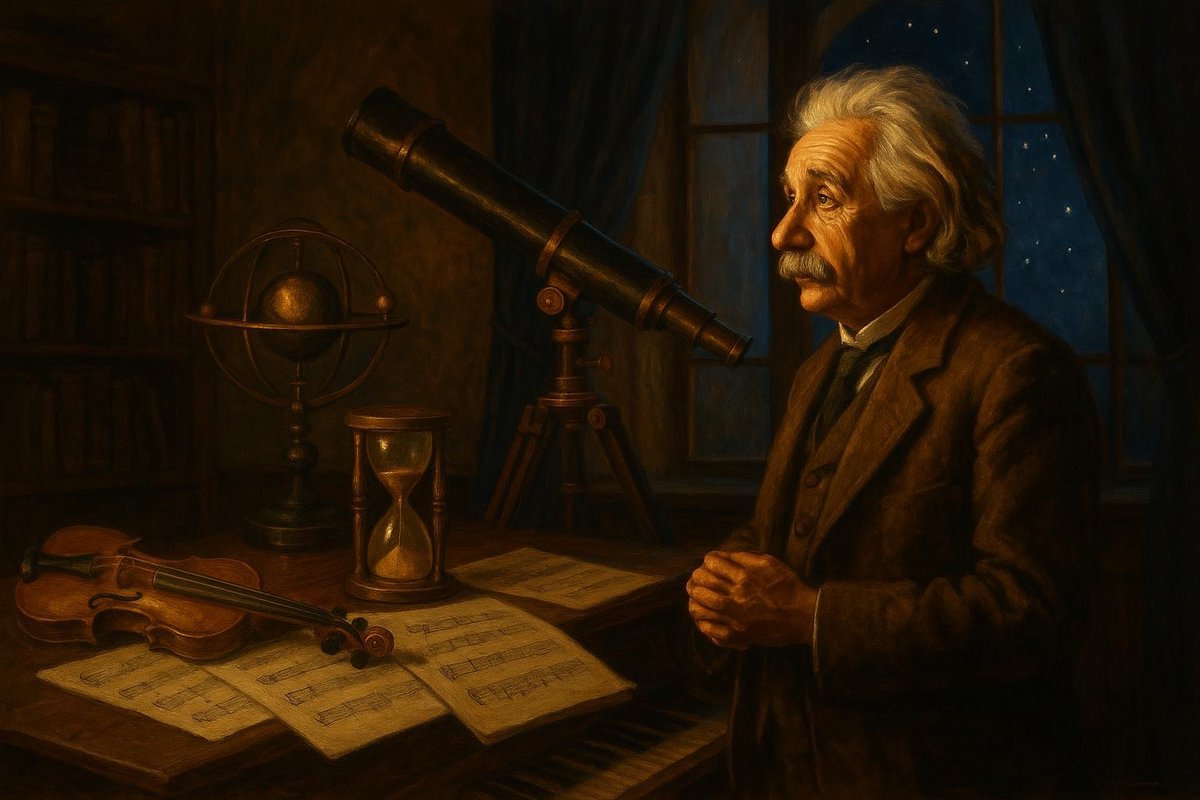
Imagine a beam of light curving gracefully through the cosmos, much like the rise and fall of a symphonic melody. This isn’t just poetic imagery; it’s an analogy that captures the essence of Einstein’s Relativity Theory. Albert Einstein’s groundbreaking work on the curvature of space and time challenged our fundamental understanding of the universe, just as an innovative composer might challenge traditional musical forms. But how do the vast expanses of space relate to the fluidity of music? Let’s journey through the harmonies of Einstein’s revolutionary ideas.
The Problem Context: A Universe in Need of New Understanding
Before Einstein, the universe was seen through Newtonian eyes, where space and time were rigid arenas in which events occurred independently. Yet, there were phenomena that Newtonian physics couldn’t account for, like the peculiar orbit of Mercury. It was a puzzle waiting for a new type of thinking.
- Newton’s laws treated space as a fixed, immutable stage.
- Mercury’s orbit was slightly off from predictions, hinting at gaps in the prevailing physics.
- Einstein perceived these inconsistencies as opportunities for deeper inquiry.
In the early 20th century, a spirit of scientific curiosity and experimentation flourished, setting the stage for innovations. The world was ripe for a paradigm shift, akin to a symphonic revolution in the music halls across Europe.
The Theoretical Breakthrough: Space and Time, a Fluid Symphony
Einstein introduced the concept that space and time are not separate entities but interwoven into a fabric that can be bent and shaped. This was Relativity Theory, a new symphonic masterpiece of the universe.
- Space-time is a four-dimensional fabric where matter creates curvature.
- Light doesn’t travel in straight lines but follows the geometry of space-time.
- Einstein’s famous 1915 General Theory of Relativity introduced these ideas.
Consider this: Just as a symphony relies on the tempo and harmony of its notes, the flow of space-time determines the path of light. This bending of light around massive objects, like the sun, mirrors the way a melody bends and plays around rhythmic structures.
Supporting Evidence: Eddington’s Eclipse and Beyond
The theory found its resounding evidence during the 1919 solar eclipse. Arthur Eddington’s expedition confirmed that light from distant stars bent around the sun, a proof as elegant as a well-executed symphonic crescendo.
- Eddington’s observations supported Einstein’s predictions, forever altering physics.
- The eclipse served as the first empirical validation of Relativity Theory.
- Public fascination grew as newspapers worldwide heralded the findings.
Just as a symphony reaches new heights with each movement, Relativity Theory propelled physics into a new era of exploration, capturing imaginations and inspiring future scientific endeavors.
Modern Relevance: Relativity’s Ongoing Melodies
Today, Relativity Theory plays an integral role in technologies like GPS, which require precise time measurements. As time goes on, we continue to see its relevance, akin to a timeless symphony enduring through ages.
- GPS systems account for time dilation—a direct application of relativity.
- Astrophysics and cosmology rely on relativity to understand black holes and cosmic evolution.
- The theory’s elegance inspires interdisciplinary research, much like how symphonic music influences diverse art forms.
Can we imagine a universe without the fluid interplay of space and time? Like a symphony’s notes, the universe’s complex rhythms and patterns reveal deeper truths about our existence.
Einstein’s mindset reminds us to embrace curiosity and question assumptions. His work encourages us to see connections between disparate ideas — as with light and symphony — and explore the universe’s mysteries with open minds.
Fuel Someone Else’s Curiosity
Feel inspired by this dance of light and symphony? Share your thoughts and insights with friends or on social media. Let others marvel at how Einstein’s Relativity Theory continues to shape our understanding of the cosmos. Together, we can explore these cosmic symphonies, sparking curiosity and wonder in our shared pursuit of knowledge.

Leave a Reply